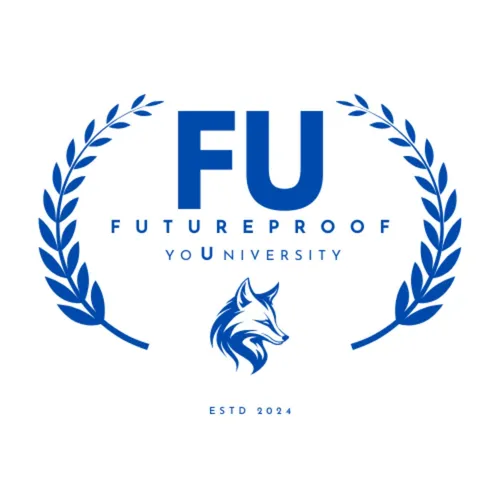The Seasons of Hiring
- Author
- Aaron Makelky, Dan Yu, John Lovig
- Published
- Sun 24 Aug 2025
- Episode Link
- https://share.transistor.fm/s/191c6f9f
FutureProof You Podcast — EP 18: “Seasons of Hiring”
One‑liner
When should a job seeker push hard versus play the long game? Aaron Makelky, John Lovig, and Dan Yu map the hiring year—late summer slowdown, Q4 surge, bonus-season churn, and spring steadiness—and give a practical playbook for each.
TL;DR Takeaways
- Late summer is slower (vacations, back‑to‑school), so expect longer response times—use the window to upgrade the profile, post consistently, and pre-seed networking for September.
- Signals that the market’s waking up: more job postings, noticeable LinkedIn activity, and companies hiring recruiters (hiring follows recruiters).
- Q4 moves fast: “use‑it‑or‑lose‑it” budgets, pockets of holiday slowdowns—win with “politeful pestering,” clear availability, and transparent timing across parallel processes.
- Year‑end to Q1: bonus visibility and payouts trigger candidate movement; January is quiet, then momentum builds—by March through May, hiring is steady and planned.
- Always be networking and creating social proof (content, recommendations); the work done today often pays off quarters later.
Chapter Guide
- 00:00 — Welcome + why “seasons of hiring” matter
- 01:07 — Late summer slowdown: vacations, back‑to‑school, two‑week decision drag
- 02:30 — What to do now: still apply to active roles, and always apply on the company site (ATS searchable)
- 04:05 — Signs of the turn: more postings, more LinkedIn activity, recruiter job counts as a health gauge
- 05:24 — Q4 dynamic: budgets, “use it or lose it,” and holiday slowdowns to plan around
- 07:08 — Content still works in “dead zones” (algorithms serve later); prep for the fall push
- 08:30 — Natural holiday networking + plotting the rest of the year
- 09:16 — Client win: from placeholder profile to offer in ~60 days through optimization + posting
- 12:00 — Social proof: help your network (and yourself) with better profiles and recommendations
- 17:20 — October tactics: “time kills all deals,” sequence outreach to newly hired recruiters
- 19:19 — “Politeful pestering,” follow‑ups, and being mindful of varied holiday calendars
- 20:32 — Share real timing across processes to create urgency (without games)
- 22:00 — “Sell to the no”: fast no beats a slow maybe
- 23:03 — Bonus season timing: when movement spikes and how to plan
- 24:33 — Q1/Q2 cadence: January quiet → March–May steady, with quarterly headcount plans
- 27:03 — The long game: groundwork in Q3 pays off in Q4/Q1/Q2
- 28:00 — Parting mindset: network when you have a job as if you don’t
The Seasonal Playbook
Late Summer (now → early September)
- Expect slower scheduling; keep applying where signals are active (recent views, engaged recruiters).
- Always apply on the corporate site in addition to Easy Apply to get searchable in the ATS.
- Post consistently—algorithms will surface good content when the audience returns.
- Pre‑seed September: identify target teams, warm up intros, and reconnect with recruiters.
Fall/Q4 (late September → mid‑December)
- Budgets drive urgency; hiring velocity increases.
- Sequence outreach to newly hired recruiters: congrats note → light check‑in week 2/3 → request informational.
- “Politeful pestering”: short, specific follow‑ups with ready‑to‑book availability to reduce friction.
- Be transparent about timelines if in mid‑rounds elsewhere; it gives partners permission to accelerate.
- Plan around holiday gaps (e.g., Thanksgiving week and other cultural/faith calendars).
Year‑End/Bonus Season (late Dec → Q1)
- Understand bonus timing in the target industry; movement often starts at visibility, spikes post‑payout.
- If moving, get pipelines warmed ahead of payout so interviews land just‑in‑time.
Q1/Q2 (Jan → May)
- January is quiet but directional; executive and strategic hires form early.
- By March–May, hiring is steady and planned across quarterly headcount—network before roles post.
Social Proof & Profile Moves
- Upgrade from “placeholder” to discoverable: banner, headline, outcomes in experience, relevant skills, and consistent posting.
- Give and request recommendations to create undeniable social proof.
- “Conference commando” strategy: follow speakers, send thoughtful pre‑event DMs, and be top‑of‑mind offline.
Power Lines to Steal
- “Time kills all deals.”
- “Politeful pestering.”
- “Sell to the no.”
- “Use‑it‑or‑lose‑it budgets.”
- “The algorithm will serve good content when the audience returns.”
Hosts
Aaron Makelky - John Lovig - Dan Yu
Call to Action
- Want help tuning up a LinkedIn profile, building a simple content engine, or navigating interviews the way recruiters actually work? Find FutureProof You on LinkedIn and grab our 5‑step profile spring‑clean checklist.
- For coaching, workshops, and courses on career pivots and AI‑powered job search, connect with the FutureProof You team on our website: https://futureproof-you.com
We’re thrilled to be sponsored by IXL.
IXL’s comprehensive teaching and learning platform for math, language arts, science, and social studies is accelerating achievement in 95 of the top 100 U.S. school districts. Loved by teachers and backed by independent research from Johns Hopkins University, IXL can help you do the following and more:
Simplify and streamline technology
Save teachers’ time
Reliably meet Tier 1 standards
Improve student performance on state assessments
🚀 Ready to see why leading districts trust IXL for their educational needs? Visit IXL.com/BE today to learn more about how IXL can elevate your school or district.
